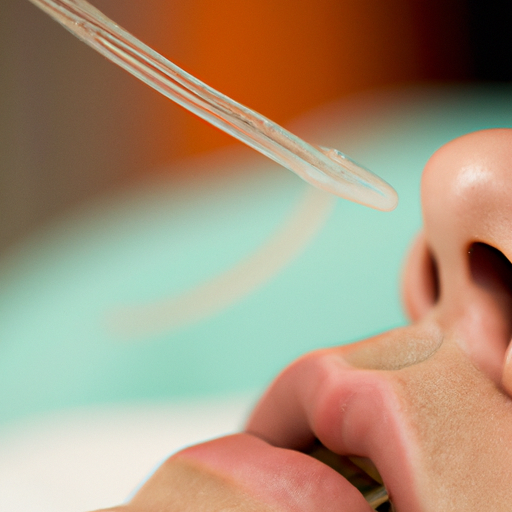Proper Placement of a Dobhoff Feeding Tube
Placing a Dobhoff feeding tube requires precision and careful attention to ensure the comfort and safety of the patient. In this article, we will guide you through the step-by-step process of properly placing a Dobhoff feeding tube.
Step 1: Gather the necessary equipment
Before starting the procedure, make sure you have all the required equipment readily available. This includes a Dobhoff feeding tube kit, lubricating jelly, a syringe, a stethoscope, gloves, and a securement device.
Step 2: Prepare the patient
Ensure that the patient is in a comfortable position, preferably sitting upright or at a 30 to 45-degree angle. Explain the procedure to the patient and obtain informed consent. Put on your gloves and maintain strict aseptic technique throughout the process.
Step 3: Measure the tube length
Measure the length of the Dobhoff feeding tube needed for proper placement. Start by measuring from the tip of the patient’s nose, down to the earlobe, and then to the xiphoid process. Mark this length on the tube with a piece of tape or a marker.
Step 4: Lubricate the tube
Apply a generous amount of water-soluble lubricating jelly to the distal end of the Dobhoff feeding tube. This will facilitate smooth insertion and minimize discomfort for the patient.
Step 5: Insert the tube
Gently insert the lubricated tube through the patient’s nostril, aiming towards the back of the throat. Encourage the patient to swallow as you advance the tube. Use the syringe to instill small amounts of air while listening with the stethoscope to confirm proper placement in the stomach. Avoid forceful insertion, as it can cause injury.
Step 6: Secure the tube
Once the tube is in the correct position, secure it to the patient’s nose using a securement device. Make sure it is not too tight, allowing for movement and preventing pressure ulcers.
Step 7: Confirm placement
To ensure accurate placement, obtain an X-ray or perform a pH test to confirm that the tube is in the stomach and not the lungs. Document the placement and any relevant observations in the patient’s medical record.
Step 8: Provide care and education
After the Dobhoff feeding tube is properly placed, provide appropriate care and education to the patient and their caregivers. This includes instructions on flushing the tube, administering medications, and monitoring for any signs of complications.
In conclusion, the proper placement of a Dobhoff feeding tube requires careful attention to detail and adherence to aseptic technique. By following the step-by-step process outlined in this article, you can ensure the comfort and safety of your patients during this procedure. Remember to always consult with a healthcare professional for specific guidance and instructions.




